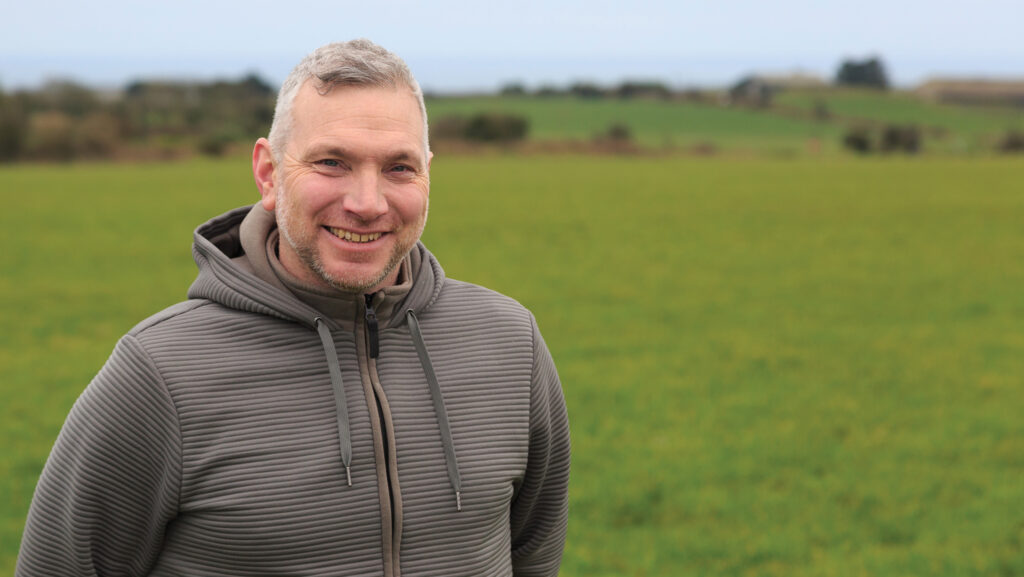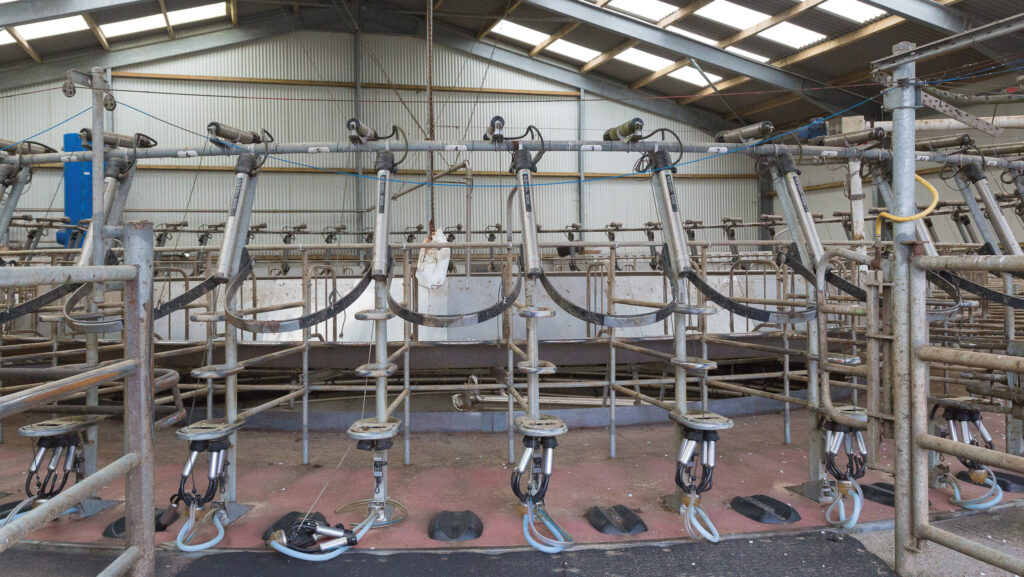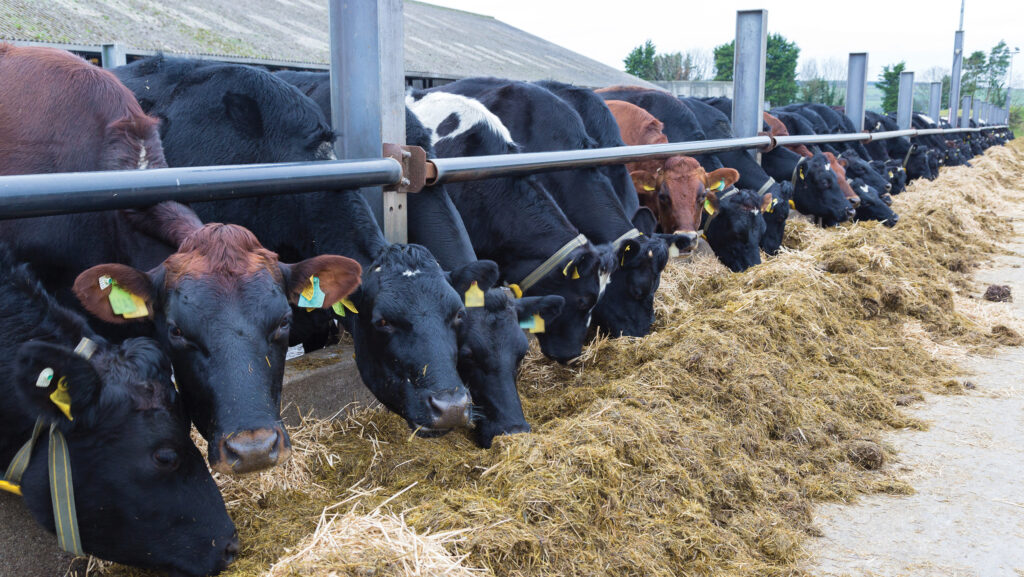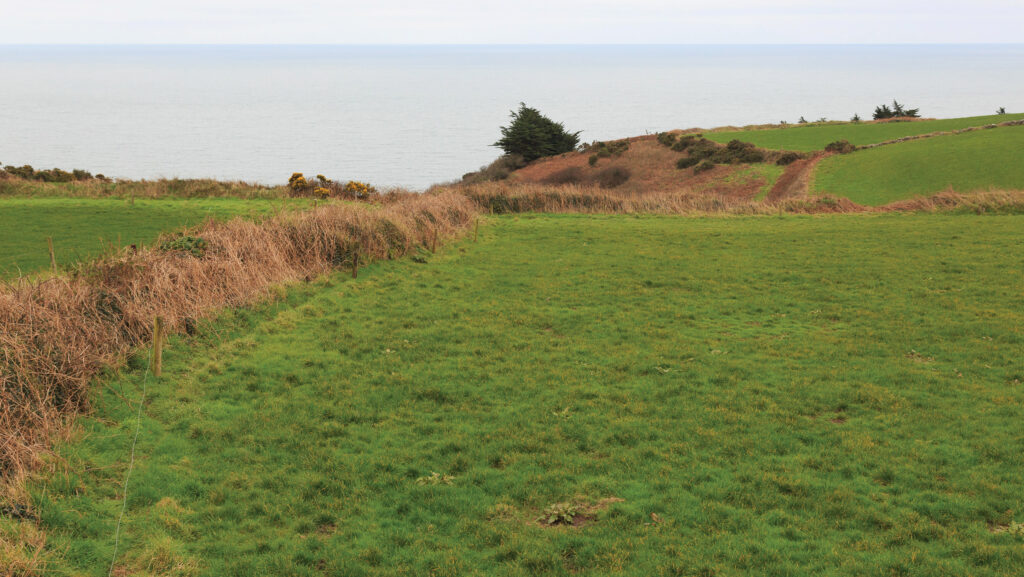How an Irish farmer keeps his spring-calving system on track
 Jamie Costin © MAG/Judith Tooth
Jamie Costin © MAG/Judith Tooth An Irish Olympic race walker has used sports psychology to help him expand a simple spring-block system and keep it running profitably.
We finds out more about spring block-calver Jamie Costin’s aim is to keep things simple.
“I have two philosophies: grow and graze grass, and don’t deviate from low-cost principles,” he says. “And I check myself if I’m at risk [of doing that].”
A former Olympic race walker and third-generation farmer, Jamie returned to Cosfeirm, near Dungarvan, County Waterford, in 2013.
He lives with his wife, Zuzana (also a former Olympian) and their three young boys, Tiarnach, Tommy and Fionn.
See also: How lush spring growth is affecting summer grazing decisions
Farm facts: Cosfeirm, Ring Gaeltacht, County Waterford
- 160ha grassland plus 20ha trees and glen
- 400 Holstein Friesian cross Jersey cows
- Spring block-calving starting end of January
- Average yield 5,000 litres at 5.15% butterfat and 3.99% protein
- Herd vaccinated against leptospirosis, bovine viral diarrhoea, salmonella and infectious bovine rhinotracheitis, and is part of the Irish Johne’s Control Programme
- 18-20% replacement rate
- Milk supplied to Tirlán
The abolition of quotas in 2015 gave the green light to expand production on this coastal farm.
By 2019, the spring-calving dairy herd had grown from 160 cows to 400, and the 20-unit herringbone parlour had been replaced by a 54-point rotary in a new building, halving milking time to one-and-a-half hours.
“With three kids, I wanted a [better] work-life balance. We needed the numbers to pay down the debt on the parlour.
“But the goal wasn’t expansion, it was profitability,” says Jamie, who bought the farm from his parents.

The 54-point rotary has halved milking times © MAG/Judith Tooth
Efficiency
Running a simple system means there is less to go wrong.
“Fewer decisions mean better decisions. So, we have no TMR [total mixed ration], and no complicated diets. These cows are made for walking long distances – 4-5km/day most days,” he says.
“That’s where a 500kg cow is good – we have the physiology of cow to suit the system.”
To achieve this, bull and cow selection are very important, says Jamie, so those cows “quietly getting on with it”, producing 700kg milk solids, are retained over those producing 400kg on the same 500kg of concentrates.
He spends the winter months, when cows are dry, going through economic breeding index rankings to help him select dairy sires for the herd.
Taking part in his local dairy discussion group has helped him focus on efficiency.
“The key lessons I’ve learned have been the importance of a strong, six-week in-calf rate – which is now 90% – and to grow as much grass as possible. In nine weeks of breeding, we got 8% empty, so we have a very fertile cow,” he says.
He also subscribes to monthly, “straight-talking” management hints from retired Teagasc dairy programme manager Matt Ryan.
“I don’t mind being told I’m wrong. I’m happy to hear, it if it helps me improve,” he says.
Jamie believes his background in professional sport has helped his approach to business.
“It brings honesty with yourself: you win, or you don’t. You admit mistakes and analyse where you’re at,” he says.
His experience as a young athlete struggling to make ends meet has made him determined to keep the cost structure of the business low.
Calving
Cows are bedded on 120 cubicles in winter with 300 in an outdoor converted beef yard.
The winter ration is straw and 20kg silage, providing 10-11kg dry matter/day.
Heifers are grouped separately and calve a week earlier than the main herd because it takes them a week longer to get back in-calf.
They are kept with 15-20 smaller cows to help them settle into the main herd when the time comes.

The winter ration comprises straw and silage © MAG/Judith Tooth
Planning is essential for successful block- calving, says Jamie, who reports that 95% of heifers calve in the first six weeks.
“Be prepared, it’s intensive. From February to April, you must have enough people lined up. We’ll have 15 calves born a day in mid-February.
“You must be very organised and be able to prioritise tasks. But a tight calving block is what makes it work, so you have a bunch of cows going to grass at the same time.”
As well as full-time herd manager Simon Lawrence, and Edward Hickey – who Jamie describes as “the glue that holds everything together” – the farm has student help for four months during calving.
Two of his nieces also help with calf feeding and milking, and “there’s give and take with neighbours”.
The cows also wear heat detection and health collars.
Body condition
Once-a-day milking in February and November saves on labour and helps cow condition.
Jamie found this milking routine particularly helpful when the herd was expanding and included a lot of heifers.
“They are under most stress after giving birth and at their most vulnerable in the first four to six weeks,” he says.
“[With this,] they don’t lose so much body condition. I’m happy with the results.”
Heifers are now reared off-farm by a contract rearer, who also feeds calves on the farm in spring and helps with scanning.
Body condition is key for fertility and most important between October and April, Jamie says.Cows are monitored towards the end of their lactation.
Any scoring less than 2.75 are marked with red paint and dried off immediately, while those greater than 3.25 are given a blue mark, then grouped separately to be fed a lower-energy silage with straw.
“We feed the rumen without giving cows energy to put on weight. Keeping the cows at a constant weight helps so much with not having health issues,” says Jamie.
The farm vet is “hugely important” in helping the team follow a preventative health strategy.
Jamie uses “very few” antibiotics and no wormers have been given since 2017; faecal egg counts are done every two months.
Grassland management
Measuring grass is the most important job for the viability of the farm “so you know what you have and can manage it”.
Jamie uses the Teagasc software management tool PastureBase Ireland to help him make decisions.
“It’s done twice a week – 60 times a season – and takes an hour each time. It’s essential, so it’s where I prioritise my energies.
“Stocking rate must be matched to growth, so you know where to graze next. Every Monday morning, grazing for the week is planned,” he says.

Grass is measured weekly © MAG/Judith Tooth
Grazing the mostly clover-rich swards runs from 1 February to the end of November. Cows graze paddocks for 24 hours/day, with back-fencing in early and late season.
Fields have multiple entry and exit points for use in wet weather.
Between 1 February and 1 April, cows graze the whole farm once, and some paddocks get a second grazing. And if conditions allow, silage ground (which is furthest away) is grazed first.
The second grazing rotation runs from 1-30 April. From May onwards, the platform is on a 21-day rotation.
Slurry spreading is by contractor using an umbilical system and gets going in early February, once the ground can take machinery and soil temperature rises above 6C.
It starts with land last grazed the previous November, which amounts to about 30% of the farm. By 20 March, another 40% of the grazing platform has had slurry spread.
Clover ground receives protected urea at the start of the season, P and K, and slurry after every second grazing.
